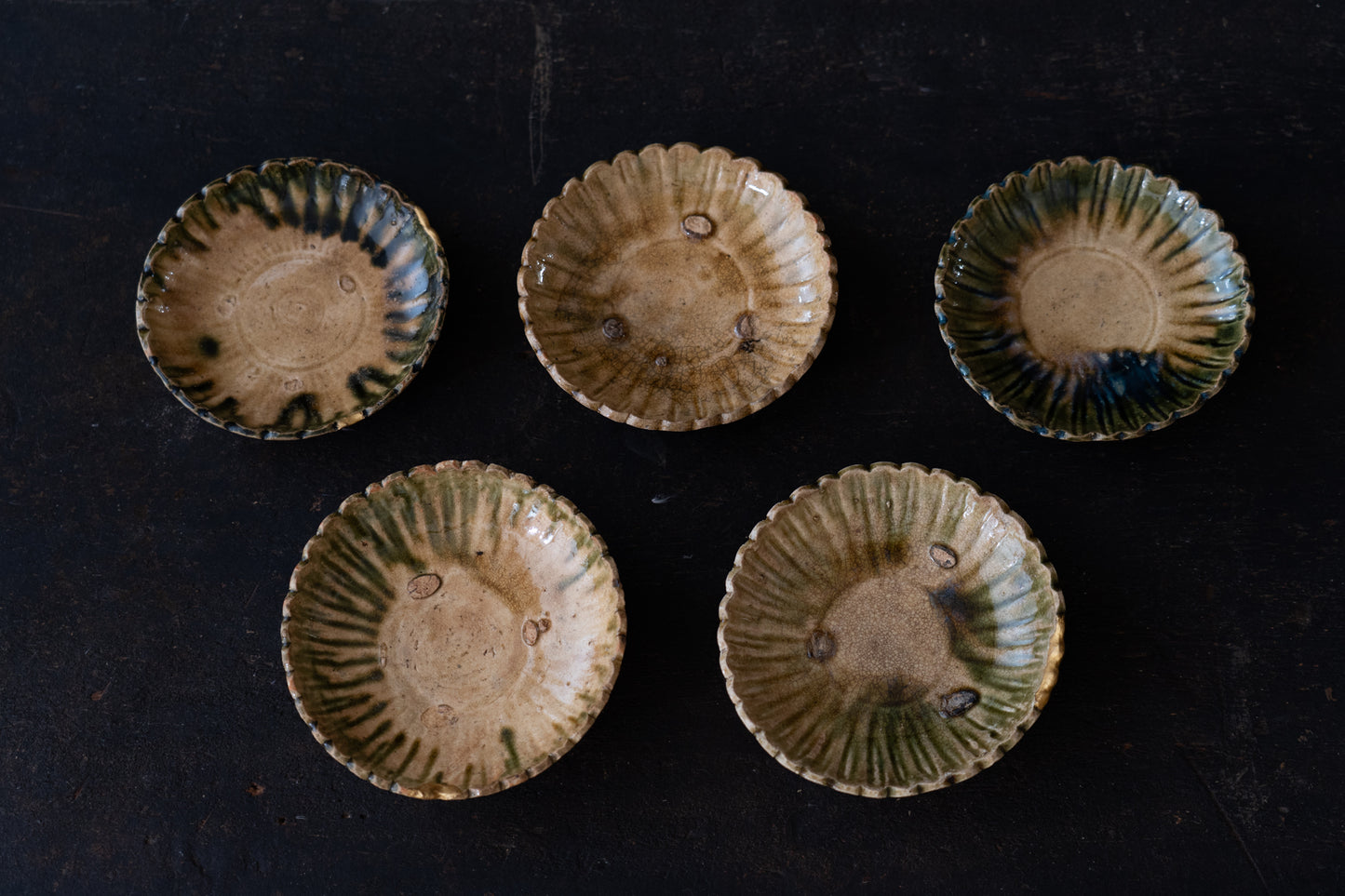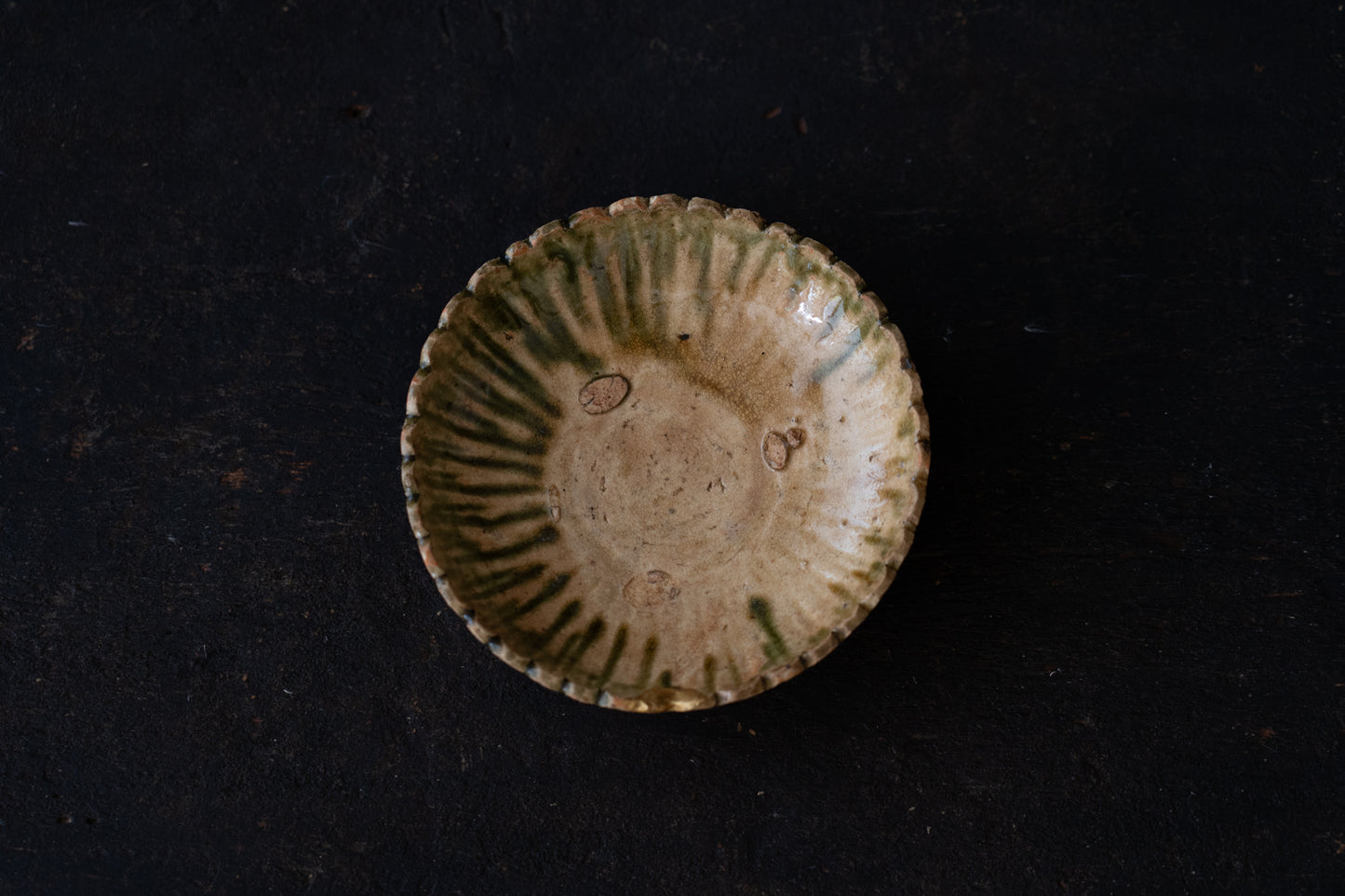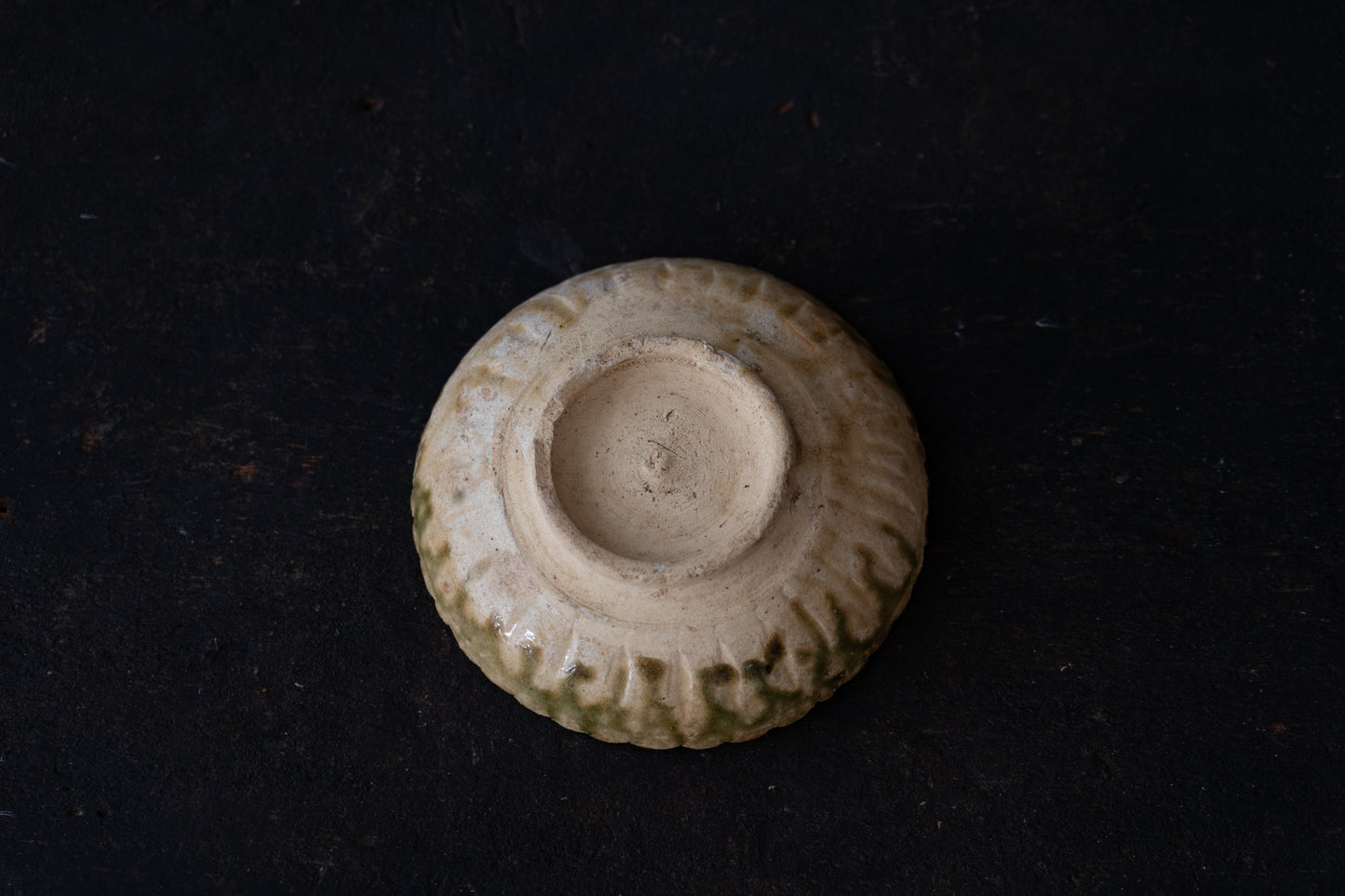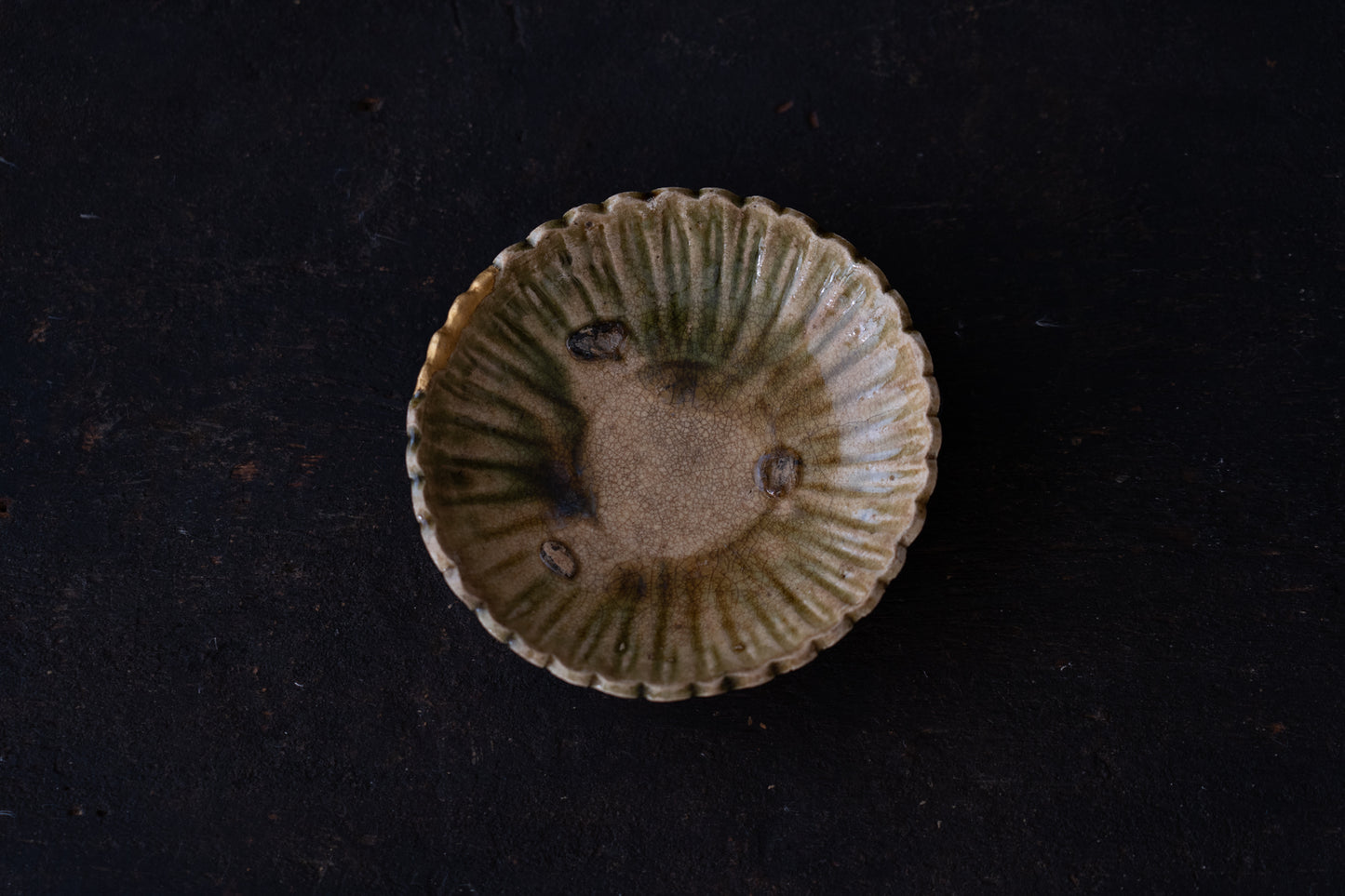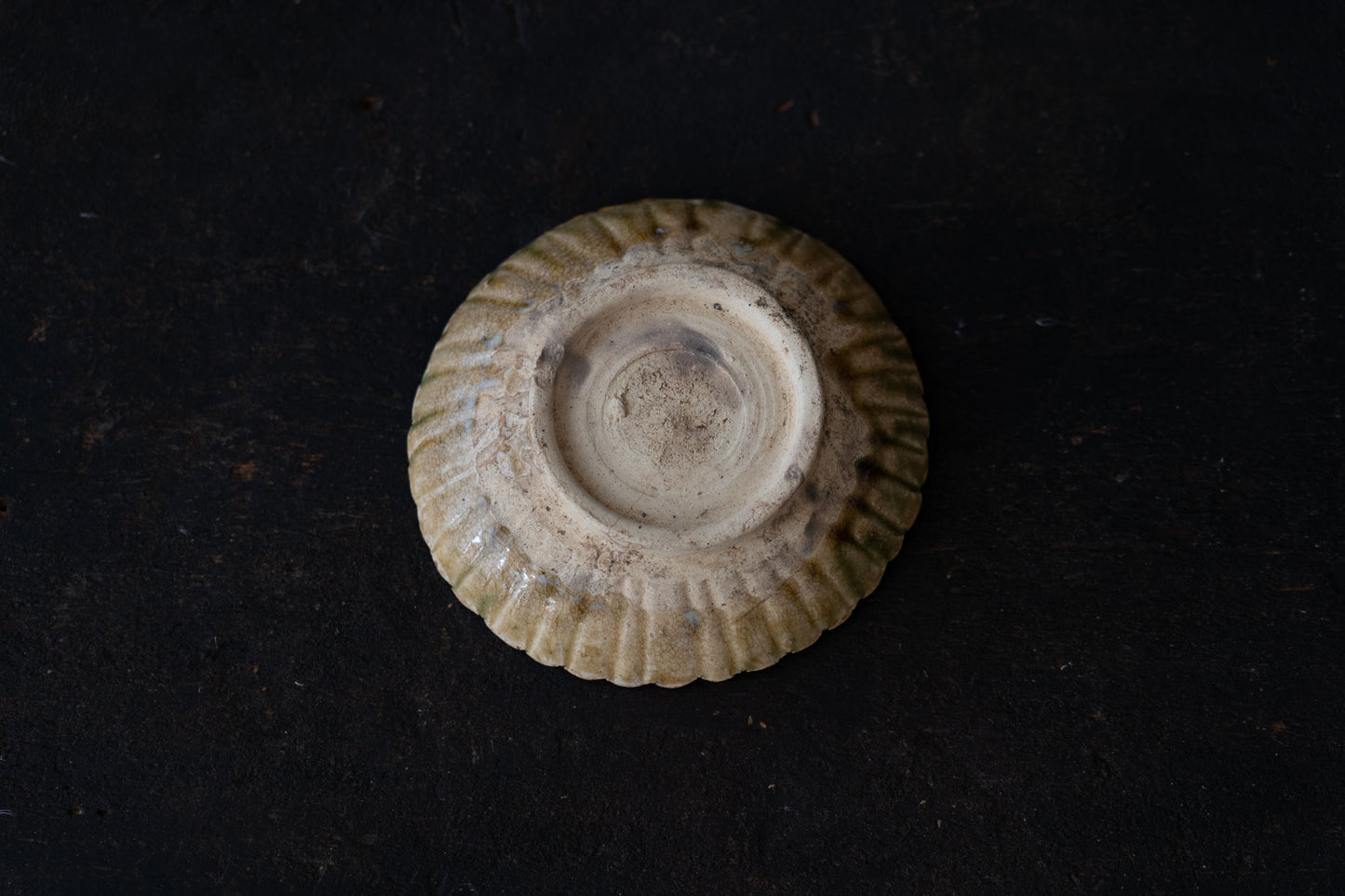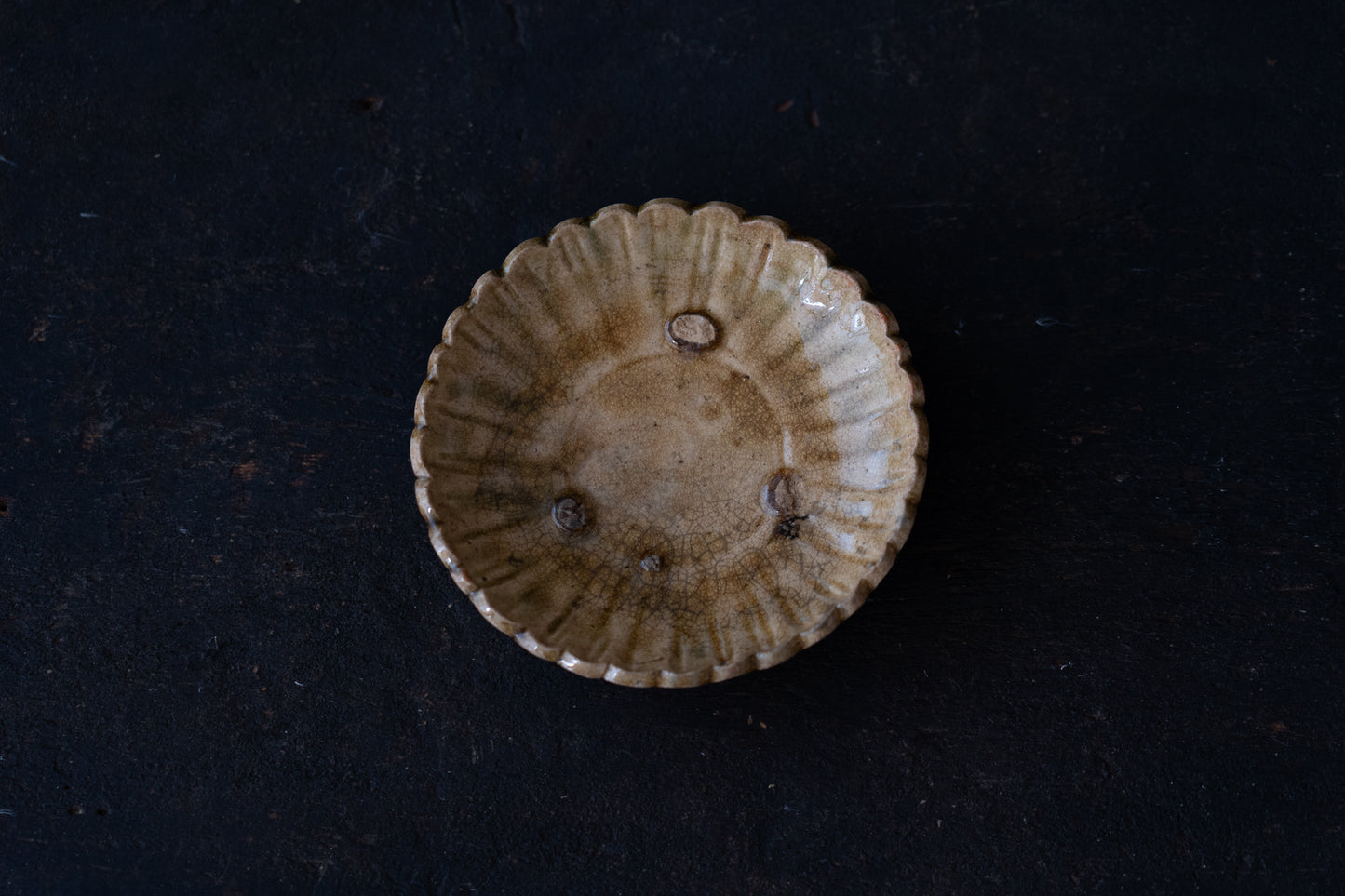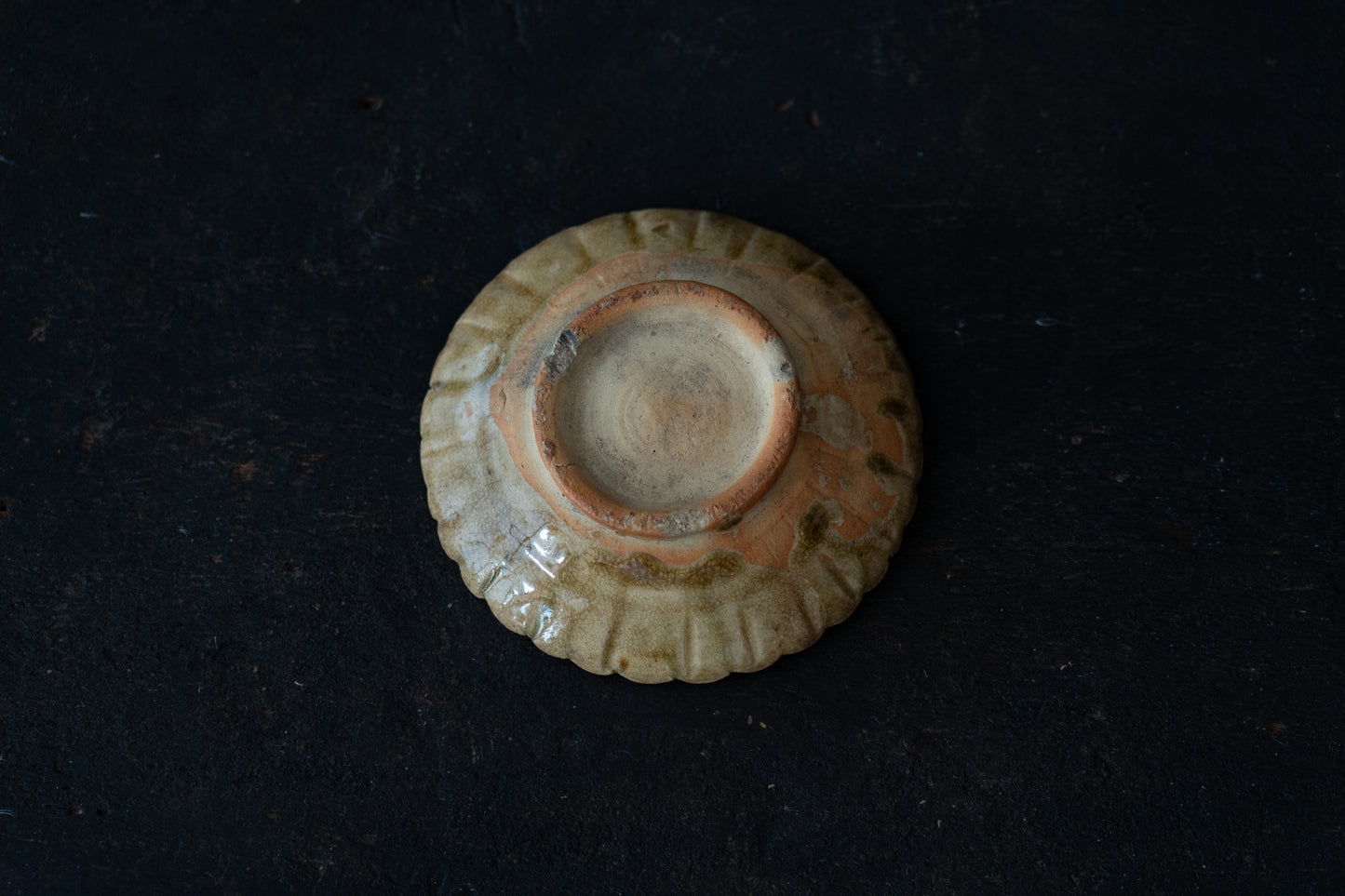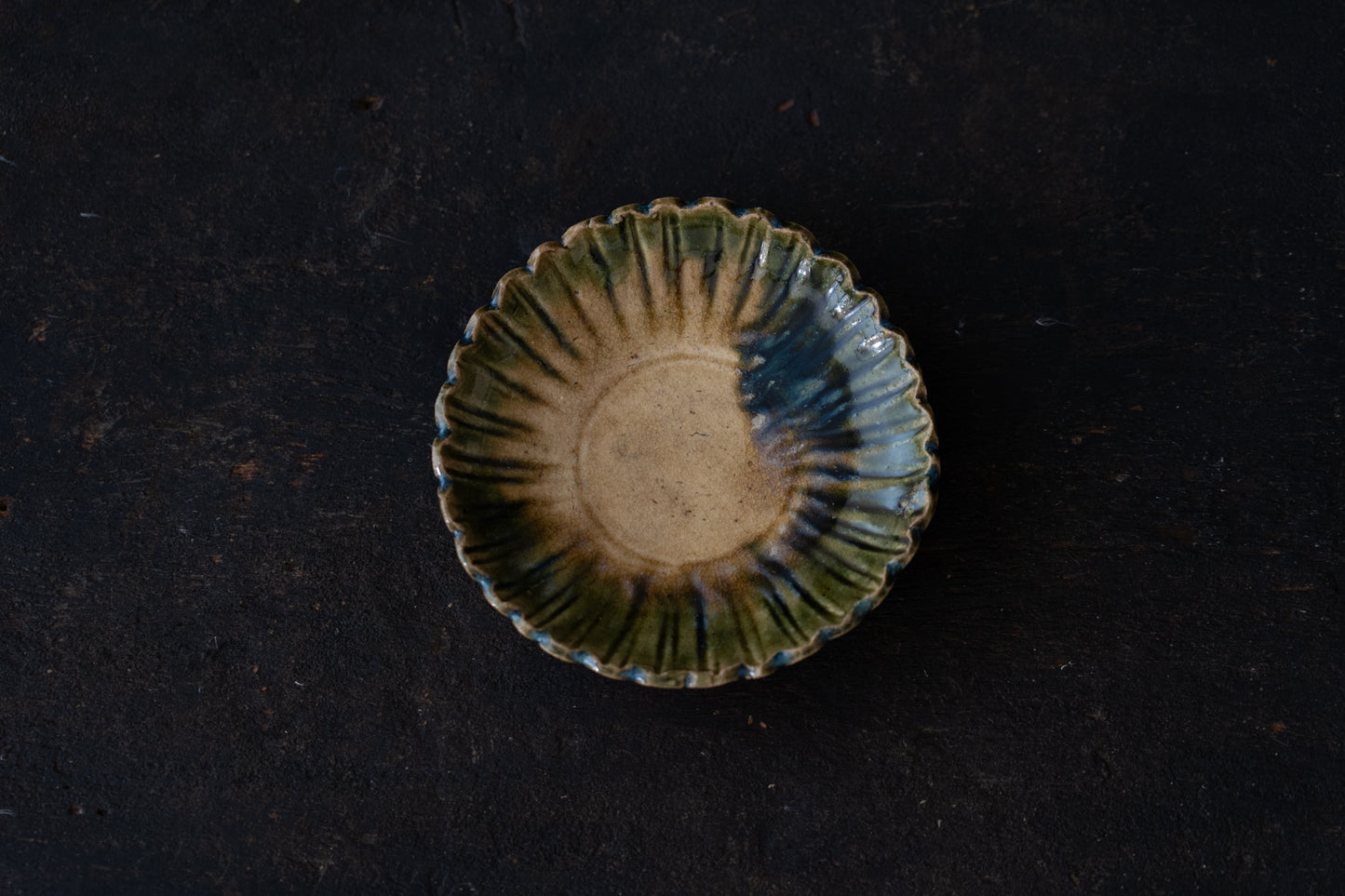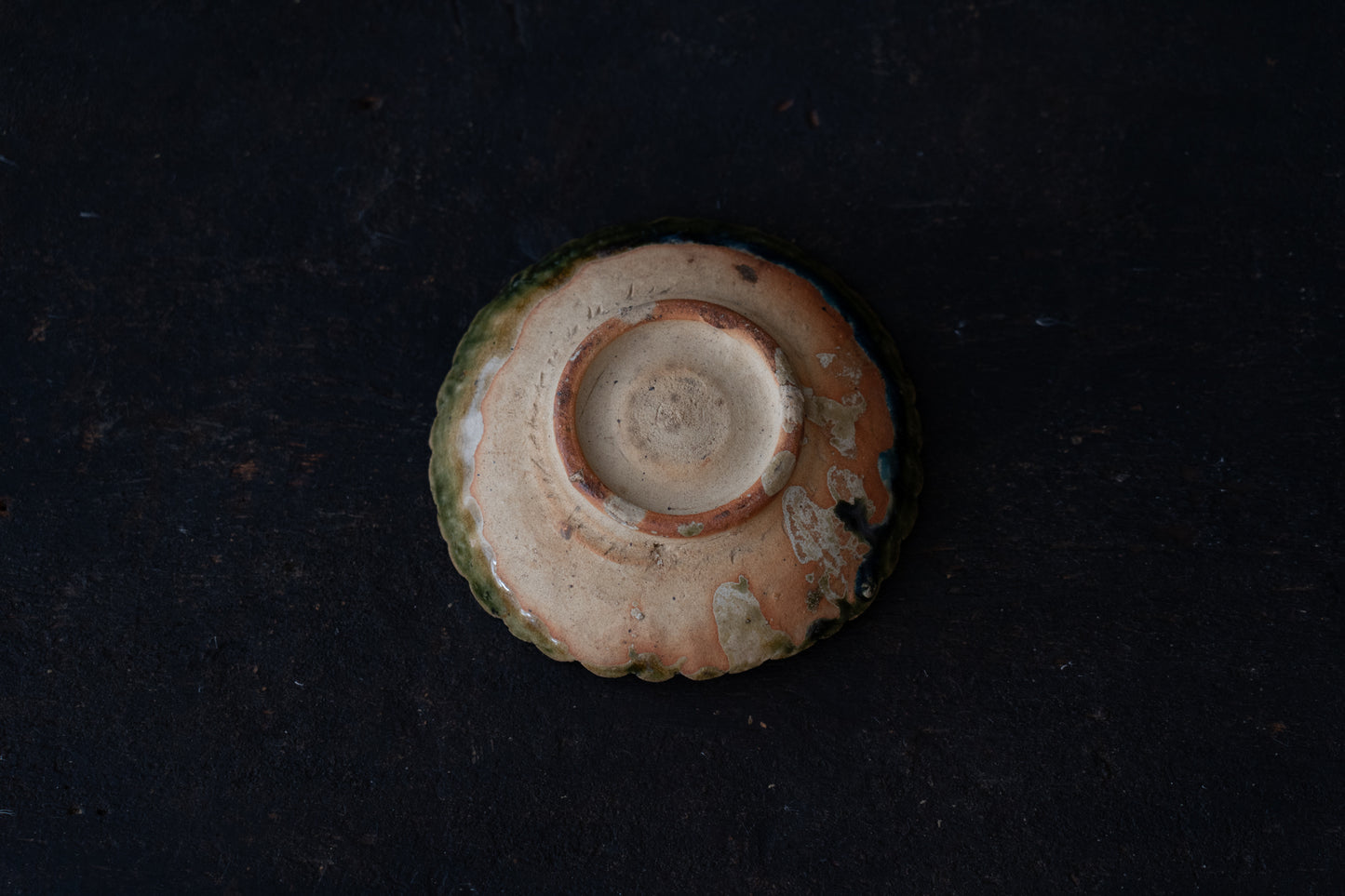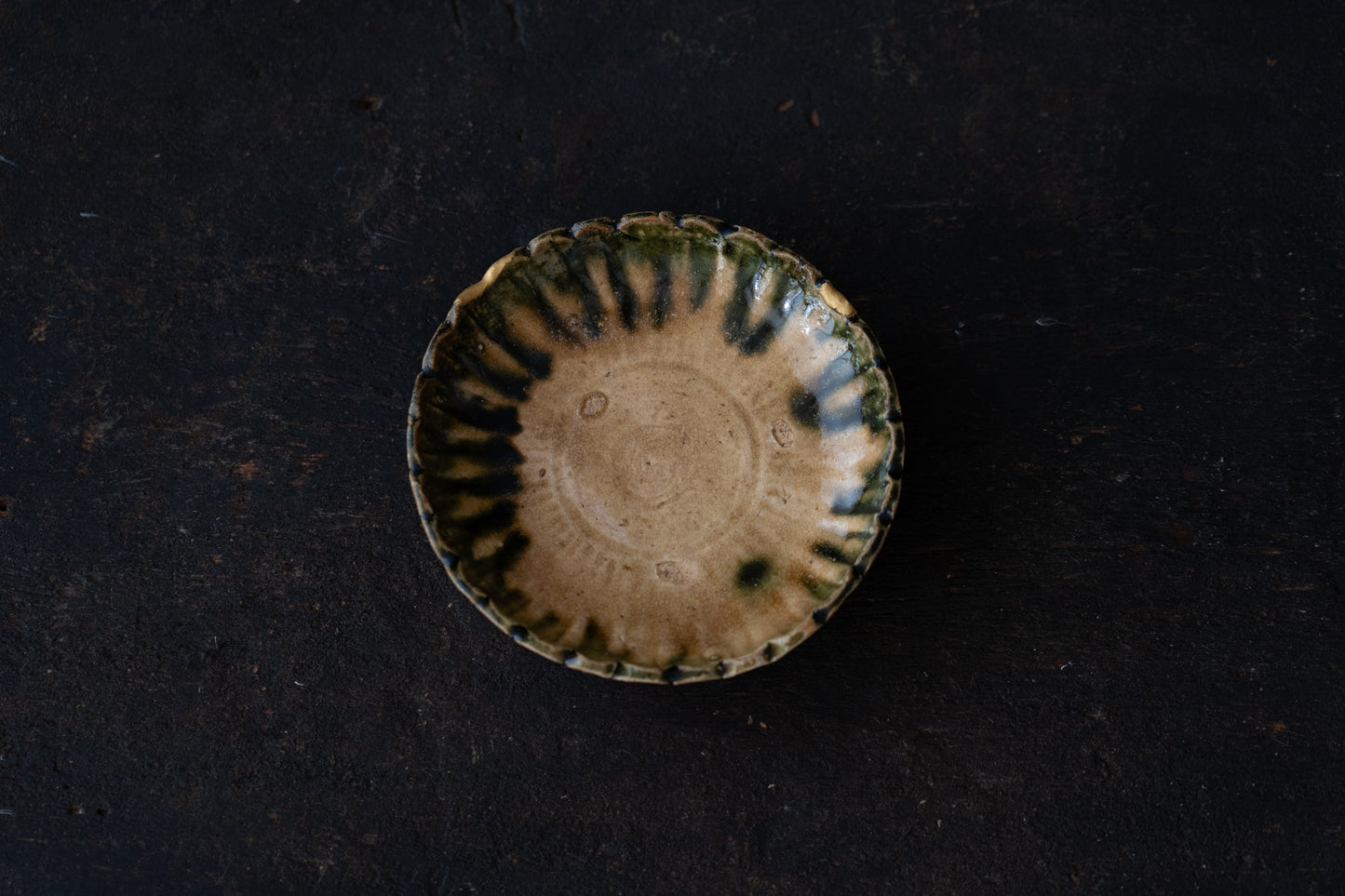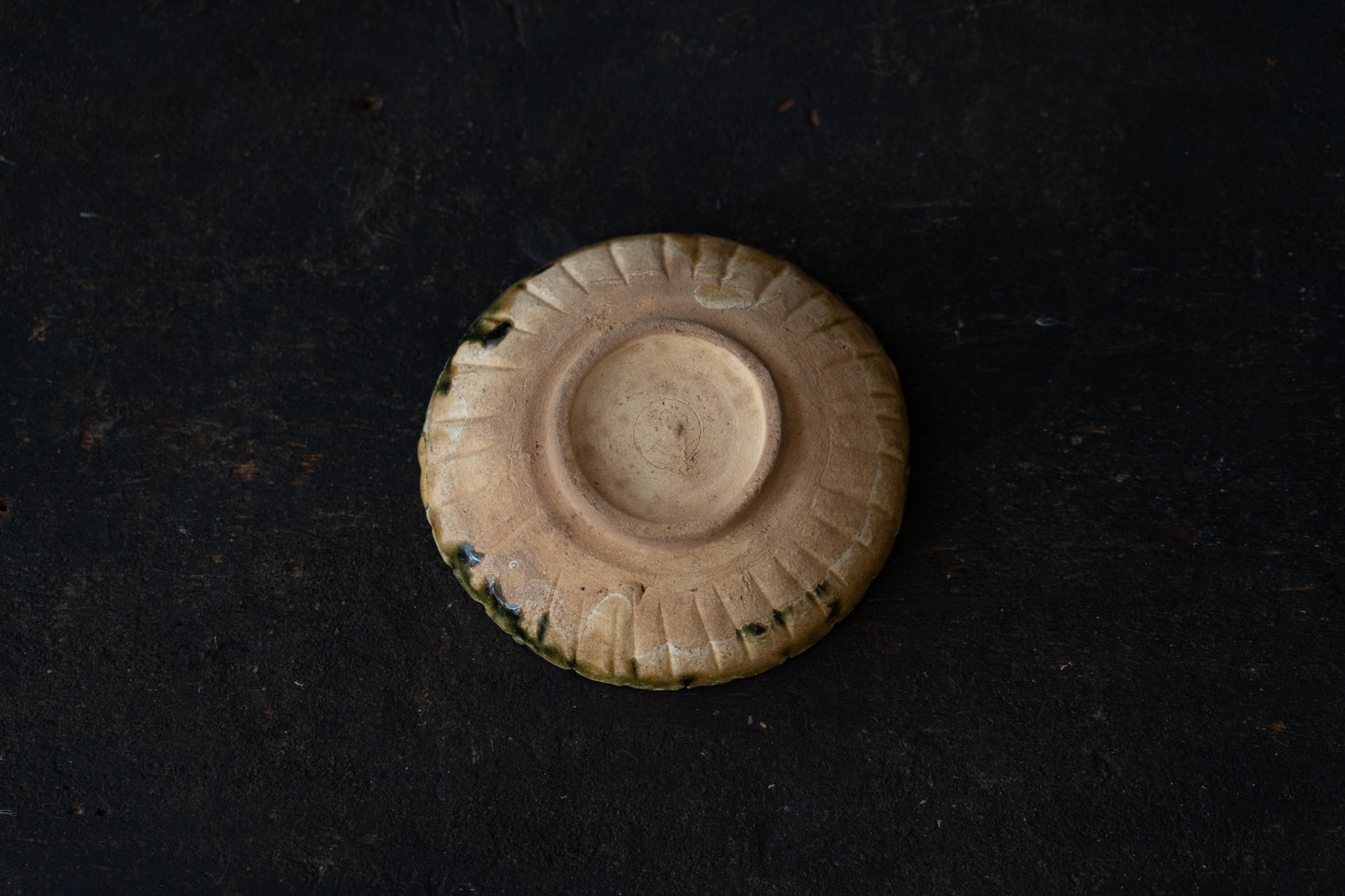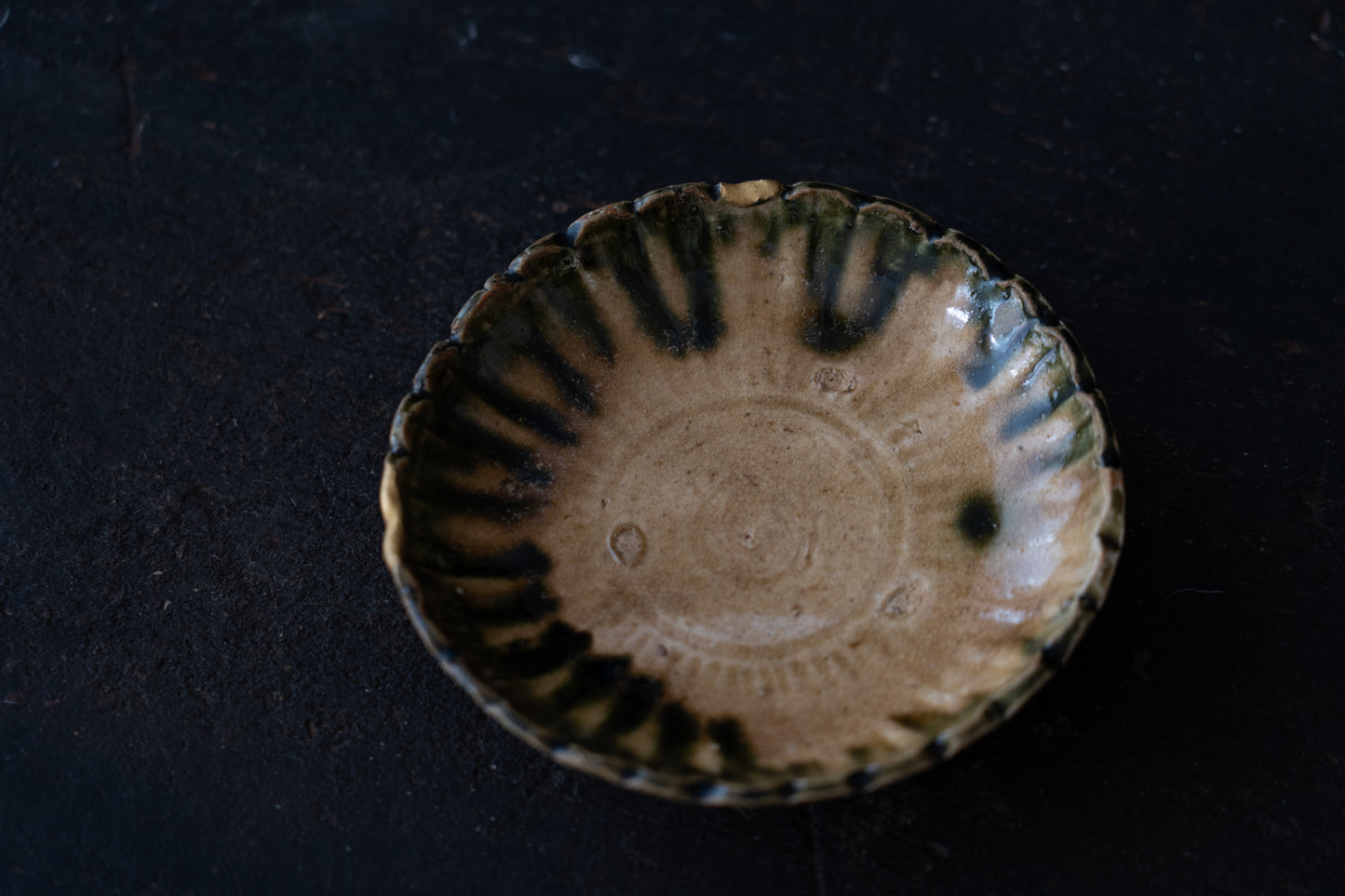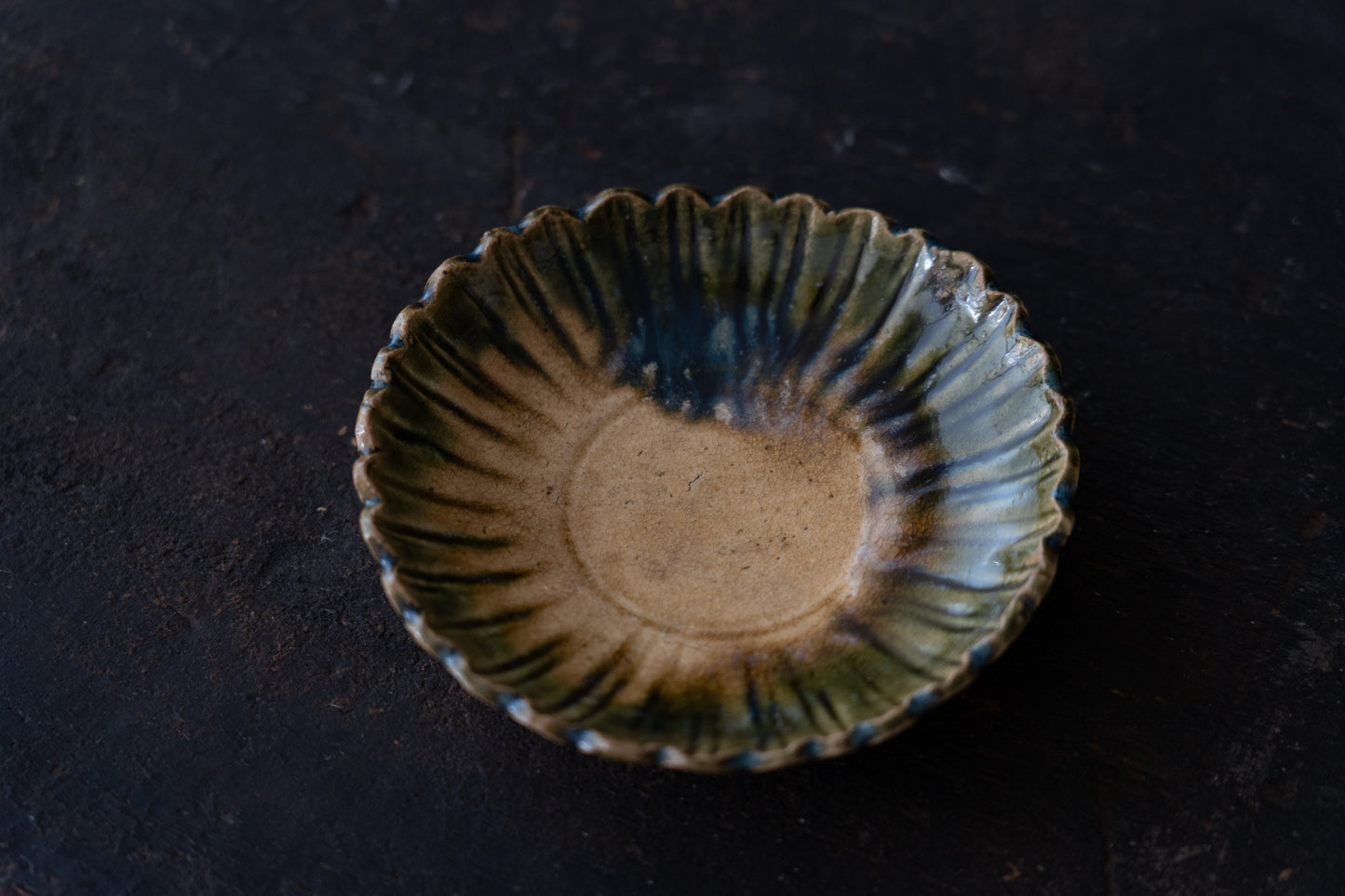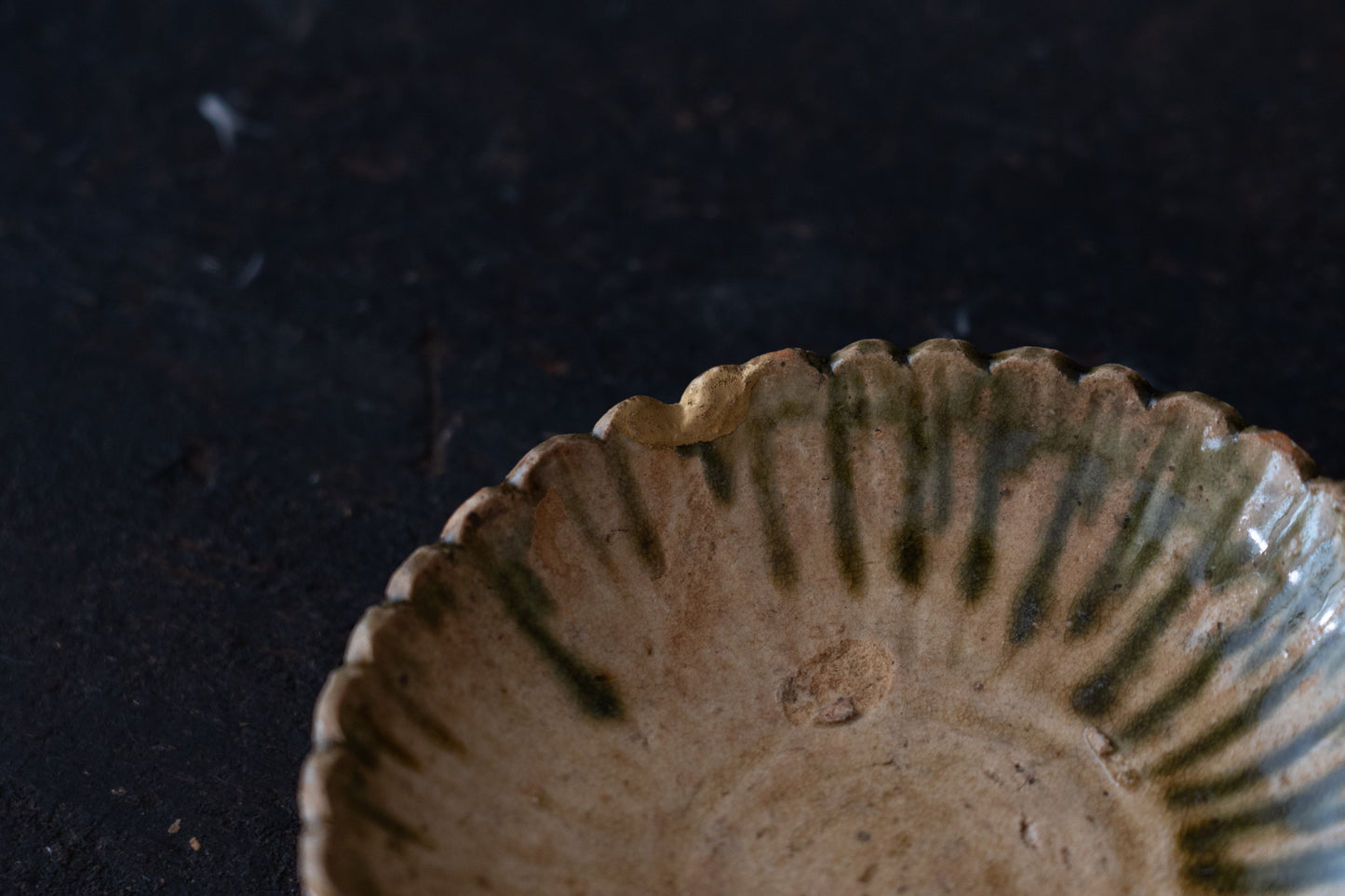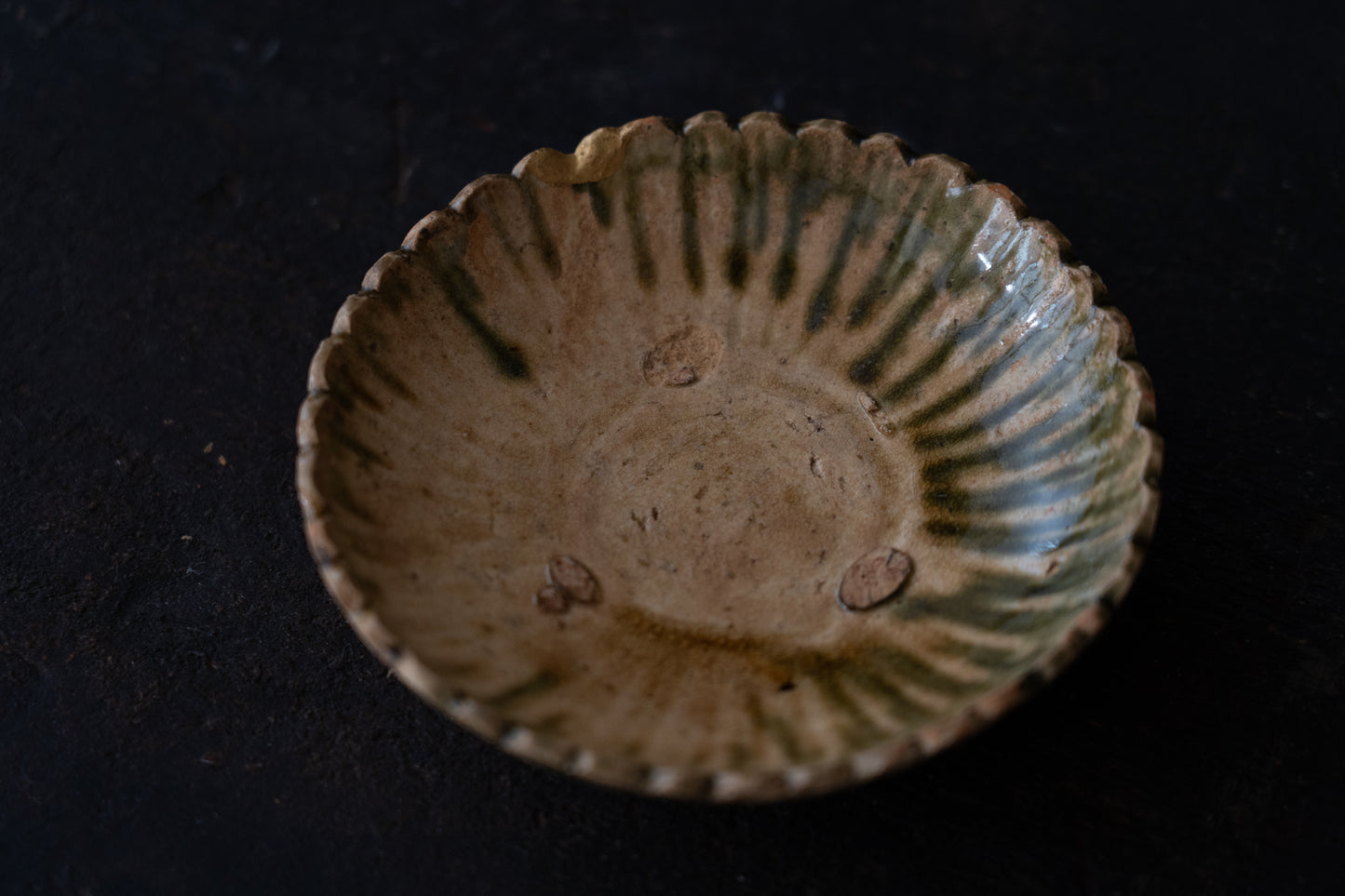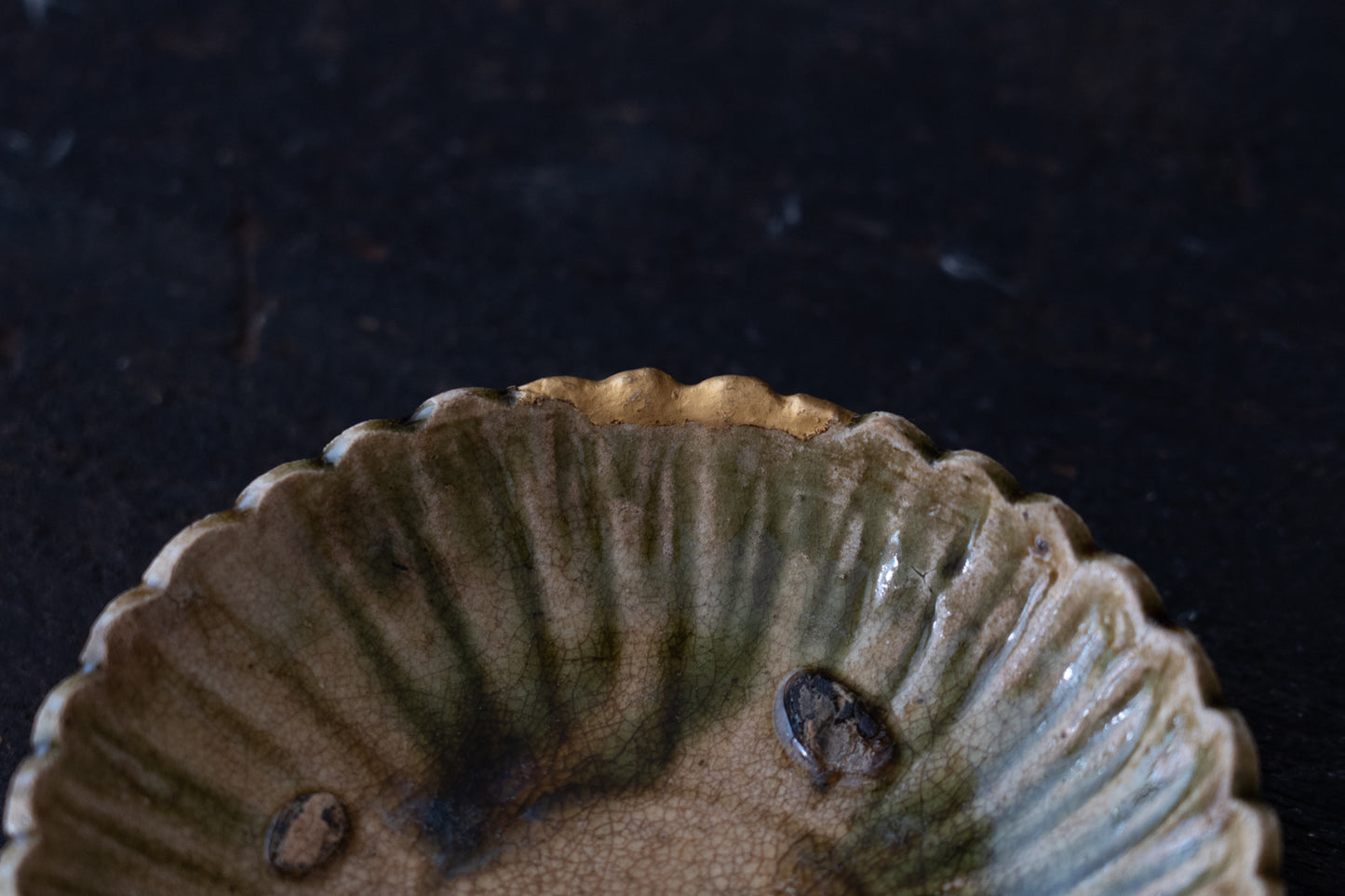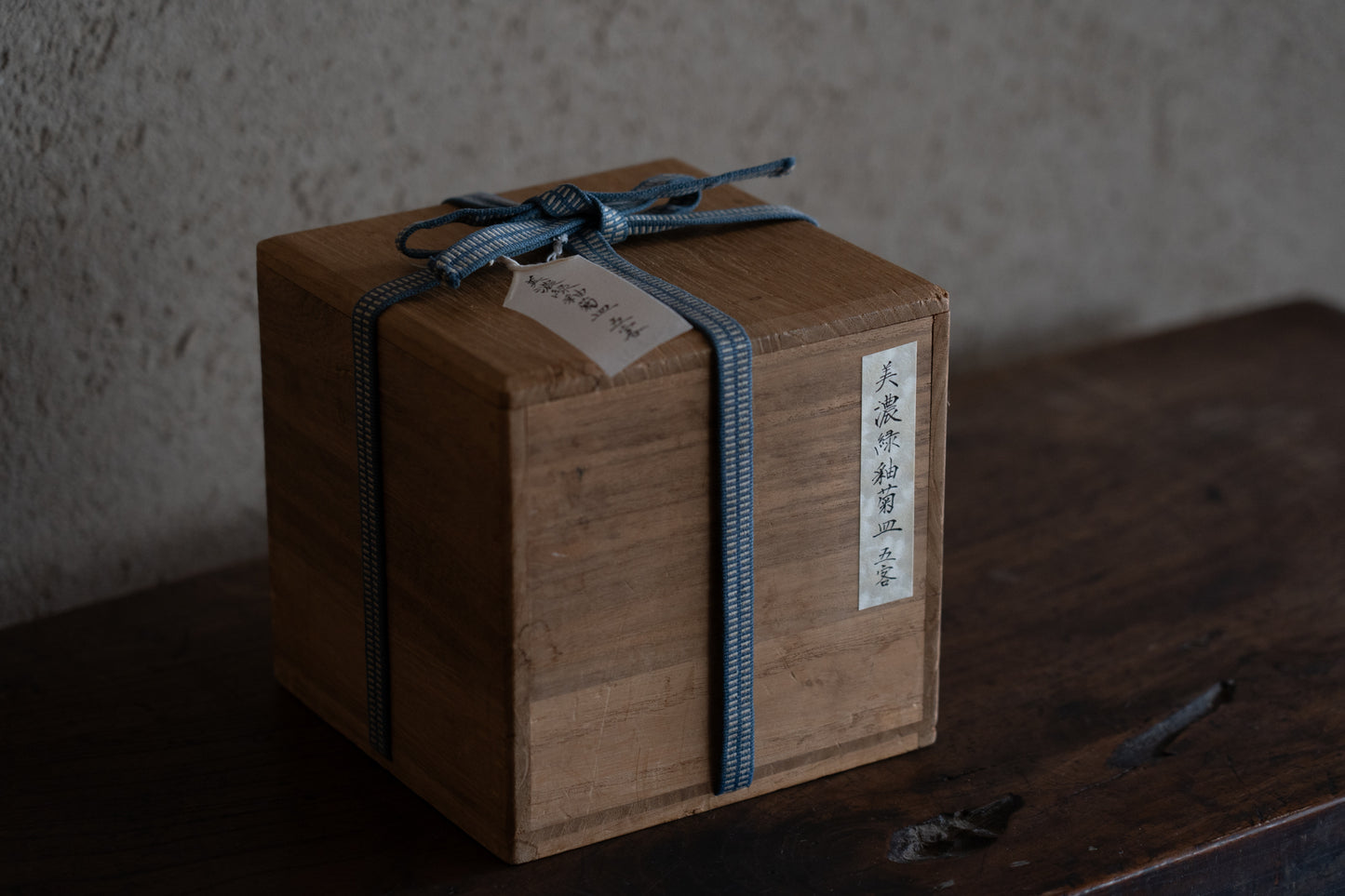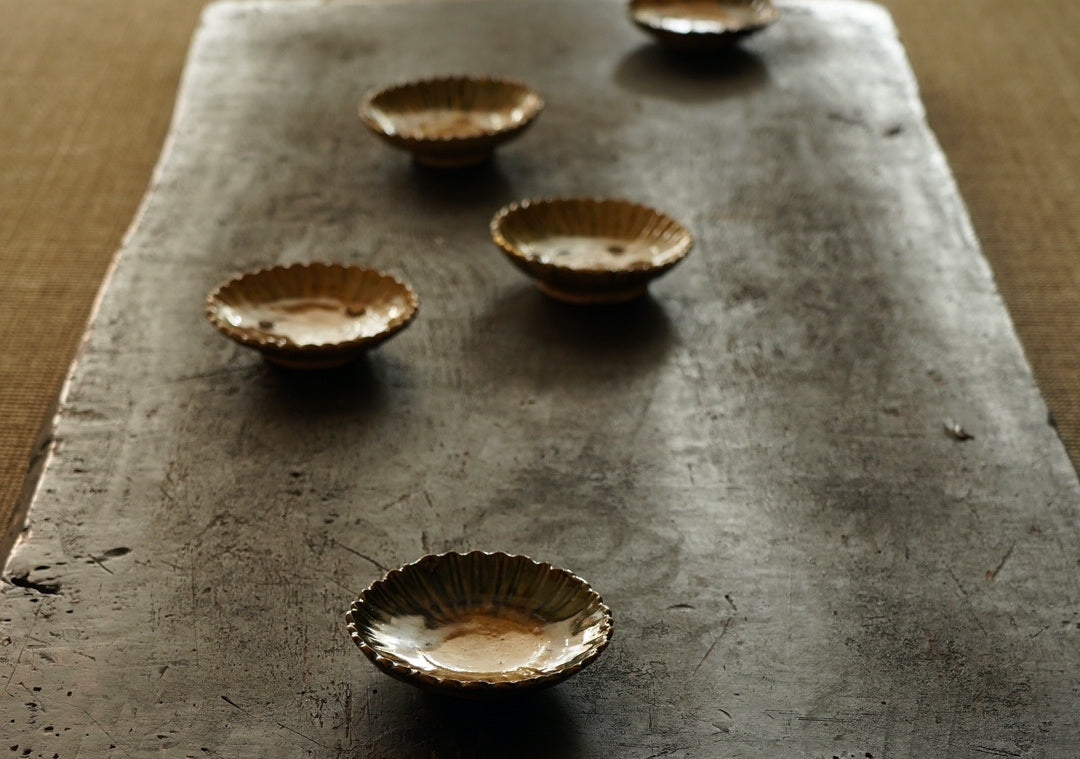A set of five Oribe green glazed dishes in chrysanthemum design
- Region/Era Mino, Japan / Early Edo period, first half of the 17th century
- Size H3.8×W14.0×D14.0cm
- Condition 2 pieces/perfect, 2 pieces/1-2cm gold repair on the edge, 1 piece/4cm hairline crack and 3cm gold repair
- Accessory paulownia box
- No. 43nk-71
The inside of the plate is shaped like a chrysanthemum, and the rim is shaped like a flower. It is a deep plate, and the outside is engraved with lines along the petals.
The entire surface is covered in ash glaze, except for the area around the base, and green glaze is poured onto the rim. The green glaze, typical of Oribe ware, stands out and creates an attractive sight.

There are a fair number of chrysanthemum plates in existence, but most of them are excavated products and are therefore in poor condition. They usually have significant scratches, but I was able to find a set of five plates in good condition.
Two are in perfect condition, two have one or two 1-2cm gold repairs on the edges, and the remaining one has a 4cm hairline crack and a 3cm gold repair. The repairs are not too large, and the condition is very good for a chrysanthemum plate. Please see the photos for more details.

The Ohira Kiln, which was in operation from the Momoyama period until the end of the Edo period as the birthplace of Mino ware, is known as the kiln that produced chrysanthemum plates in the first half of the 17th century.
The Ohira Kiln was first opened in 1573. Oda Nobunaga, who was focusing on protecting pottery, made both Seto and Mino his domain and issued a permit to open a kiln in Ohira to the potter Kato Goroemon Kagetoyo.

Blessed with good soil, Ohira kilns produced a large amount of highly artistic Mino pottery, starting with Kiseto and Setoguro, as well as Oribe and Shino. In the 1630s, tea ware disappeared, but chrysanthemum plates and sake bottles began to be produced.

A paulownia wood box that can hold 5 sheets is included.
To pick up and see the actual item in the gallery.
Reservation